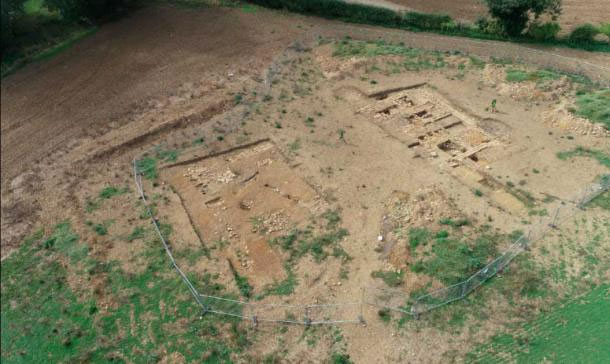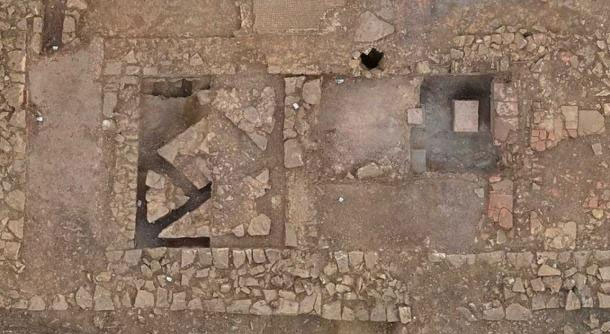An initial structure that was thought to be a warehouse, later suspected to be a shrine, has shocked researchers by revealing itself as a fully equipped 1,700-year-old spa.
According to Ancient Origins, the structure is located within a Roman villa complex that dates back to the mid-3rd century to the 4th century AD, making it over 1,700 years old. The villa was first discovered in 2020 by farmer Jim Irvine, the son of the owner of the private land in Rutland, England.

Overview of the site where the 1,700-year-old spa was discovered – (Photo: ULAS).
In the latest excavation this year, a team of scientists from the University of Leicester Archaeological Services (ULAS – UK) focused on a new building within the villa, located about 50 meters away from the main house.
Initially thought to be a wooden warehouse, it was later considered to be a shrine or small worship room due to its size and shape.
However, the excavation revealed it to be a… home spa with full amenities, possibly built on the foundation of an actual wooden warehouse, but the details have been transformed into solid stone with elaborate interior design.
Part of the building remains a regular living space, while the luxurious spa area includes a steam room, a warm room, and a cold plunge pool, resembling the structure of a spa we still enjoy in the 21st century.

Close-up of the archaeological site – (Photo: ULAS).
The wide column holes indicate that the building was also supported by large wooden beams and might have had two stories. The wall structure shows that it has been reinforced and repaired multiple times with progressively modern technologies, likely due to the humid environment of the spa causing the walls to deteriorate quickly.
Similar to ancient Roman baths, this 1,700-year-old spa also features a heating system with a furnace hidden beneath the floor, where the steam rooms have small holes allowing hot steam to be blown into the rooms.
This discovery once again highlights the “timeless” lifestyle of those belonging to the great Roman Empire, supported by advanced technology, especially in infrastructure.
Previous excavations have uncovered many valuable artifacts within the villa complex, the most notable being an 11×7 meter mosaic depicting a scene from the Trojan War in Homer’s epic, the Iliad.
The mosaic is one of the most valuable archaeological treasures, representing not only high art but also providing insights into ancient commercial life as noble owners often used imported colored stones from around the world to create such artworks.


















































